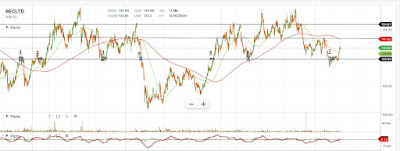Fundamental Analysis Part 2 - Introduction to fundamental analysis
Fundamental analysis is the procedure of understanding the overall business of a company that is going to invest for long term from various perspectives. In the long term view, the share price of a fundamentally strong company will tend to increase, thereby compounding the money of the investor. Participation in the share market today is categorized into two types
- Long term investment
- Short term trading
In long-term investment, we buy the shares of a company and hold them in our Demat account for a certain period. The term related to long-term investment is taking "Delivery" of best stocks.
Why do people hold the shares for the long term?
- Capital appreciation - As time passes the performance of a fundamentally strong company will tend to improve and thereby the share price of the company will also increase. Hence long-term share market investment will give huge returns.
- Dividends - Dividends are the sum of money that is paid by the company to their shareholders being the profit earned during the year. I have already posted an article on " How do dividends protects the investor?" on this page. Check the link to learn more on dividends.
How do we select stocks for long-term investment?
The tool used for selecting stocks for long-term investment is fundamental analysis. In the fundamental analysis, we do quantitative and qualitative factors of the company. By understanding the basic business and management of a company, we can predict the growth of the company.
What are the qualifications to become a fundamental analyst?
Becoming a fundamental analyst is not that much harder. To become a fundamental analyst you just need some basic skills
- Capability to understand the financial statements.
- Capability to understand the business and sector in which it operates
- Basic arithmetic knowledge
The core-satellite strategy
Both short-term trading and long-term investment are part of wealth creation. Core satellite strategy explains the capital allocation strategy while participating in the stock market.
- 60% - Long-term investment
- 40% - Short-term trading
For example, If you have a capital amount of 1 Lakh, then 60% of Rs. 60000 can be stay invested for the long term and 40% (Rs. 40000) can be utilized for active short-term trading.
Technical analysis ( For reference)
In this series, we concentrate on fundamental analysis. So there will be no further explanation on Technical Analysis (TA). TA is the tool used for short-term trading on equity, futures, and options. Graphs of Sensex and Nifty are the basic study materials for technical analysis.
In this article, a basic introduction to fundamental analysis is given. Fundamental analysis, types of market participation, benefits of long-term investment, qualification of a fundamental analyst, and core-satellite strategy are the topics included.
Further study on doing a fundamental analysis of stocks will be included in future posts. All contents related to fundamental analysis are included under the label "Fundamental Analysis". Read from the beginning as fundamentals are always important.
check my previous article on Stock Market Trends India.
IF YOU ARE
CONFIDENT WITH YOUR WRITING AND COMMUNICATION SKILL THEN CONVERT YOUR
SKILL TO MONEY. CHECK THE SIDEBAR OF THIS BLOG FOR MORE INFORMATION.



Hey friend, it is very well written article, thank you for the valuable and useful information you provide in this post. Keep up the good work! FYI, Au Small Finance Bank Lit Credit Card Review, I will teach you to be rich by ramit sethi pdf download,Paragraph on My Yoga Schedule will be in English , Sadhguru books pdf free download in English
ReplyDelete